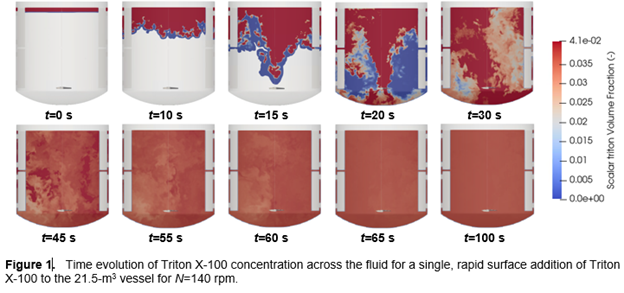2023 AIChE Annual Meeting
(313b) Computational Determination of Blend Time in an Industrial Mixing Vessel for Viral Inactivation of an Active Biopharmaceutical Ingredient
Authors
Armenante, P. - Presenter, New Jersey Institute of Technology
Shandil, I., Bristol Myers Squibb Company
Many biopharmaceutical processes incorporate a viral inactivation (VI) step to eliminate the cytotoxicity associated with possible residual contamination of viral agents. This process is often conducted by adding a viral-specific agent capable of inactivating the virus to the solution containing the Active Biopharmaceutical Ingredient (ABI), such as a protein. Sufficient contact time must be allowed for the blending and inactivation process to take place. In this work a computational approach based on the use of a CFD model utilizing the Lattice Boltzmann Method (LBM) was adopted to quantify the blend time needed to homogenize the viral inactivation agent in an actual full-scale commercial stirred vessel. Accordingly, Triton X-100, a non-ionic detergent solution used for this purpose, was computationally added to the protein solution in the 21.5-m3, full-scale vessel equipped with an HE-3 impeller and the time for the detergent to become homogenized to the desired uniformity level (95%) was calculated (Figure 1). Simulations were conducted using different addition modalities, such as batch vs. continuous, and different operating conditions, such as agitation speed. Direct experimental validation of the model predictions for blend time was not possible because of manufacturing restrictions associated with the full-scale production in a pharmaceutical plant subject to GMP regulations. However, the results obtained in this study were used to support the successful full-scale production at the biomanufacturing where, as a safety factor, the actual blend time exceeded the blend time predicted numerically here.


